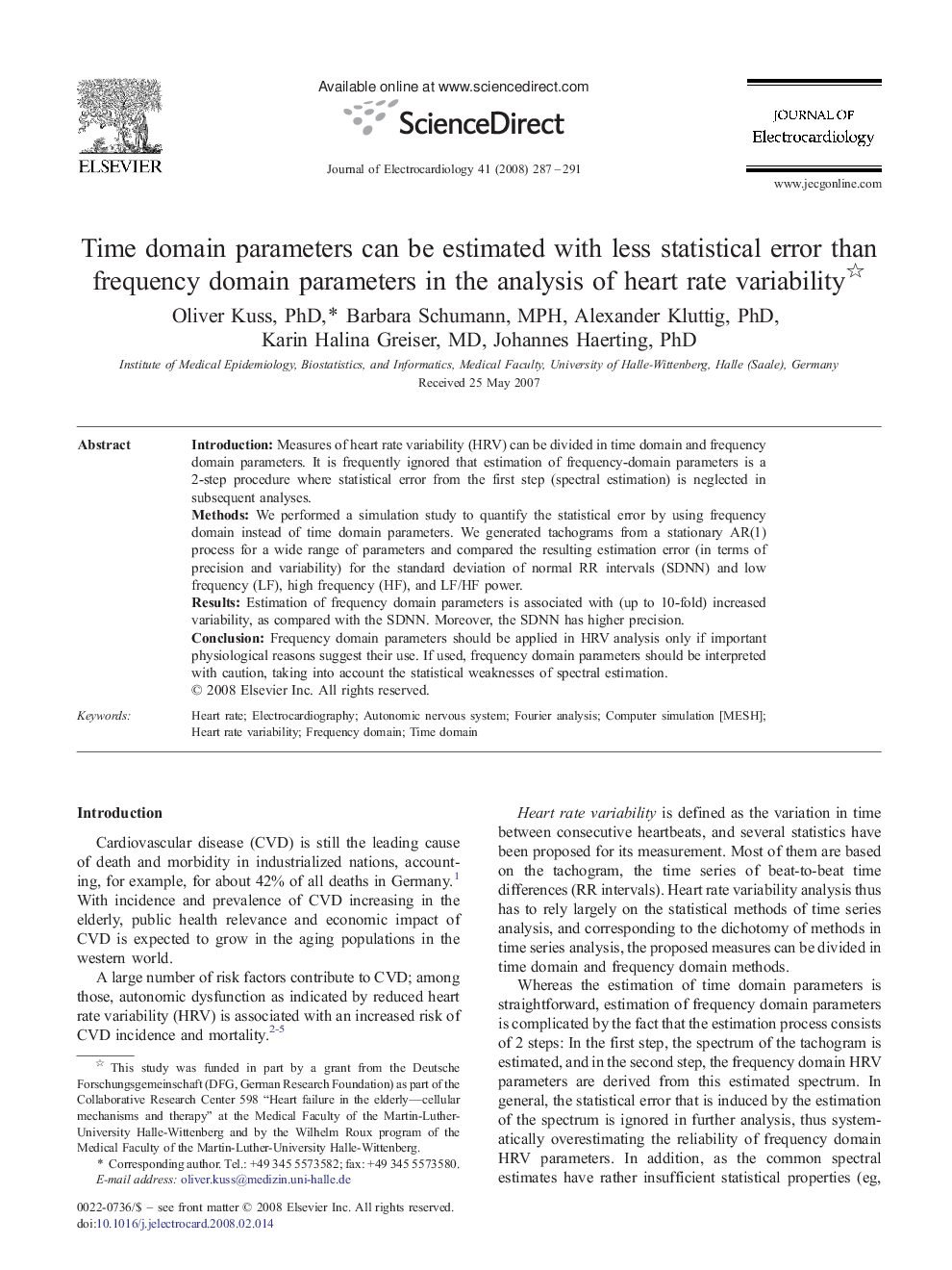| Article ID | Journal | Published Year | Pages | File Type |
|---|---|---|---|---|
| 2967819 | Journal of Electrocardiology | 2008 | 5 Pages |
IntroductionMeasures of heart rate variability (HRV) can be divided in time domain and frequency domain parameters. It is frequently ignored that estimation of frequency-domain parameters is a 2-step procedure where statistical error from the first step (spectral estimation) is neglected in subsequent analyses.MethodsWe performed a simulation study to quantify the statistical error by using frequency domain instead of time domain parameters. We generated tachograms from a stationary AR(1) process for a wide range of parameters and compared the resulting estimation error (in terms of precision and variability) for the standard deviation of normal RR intervals (SDNN) and low frequency (LF), high frequency (HF), and LF/HF power.ResultsEstimation of frequency domain parameters is associated with (up to 10-fold) increased variability, as compared with the SDNN. Moreover, the SDNN has higher precision.ConclusionFrequency domain parameters should be applied in HRV analysis only if important physiological reasons suggest their use. If used, frequency domain parameters should be interpreted with caution, taking into account the statistical weaknesses of spectral estimation.
